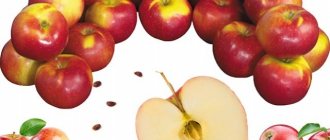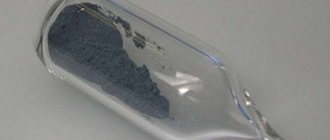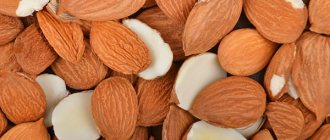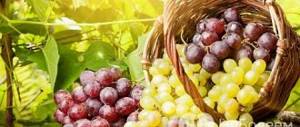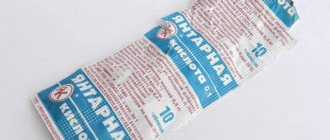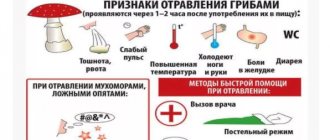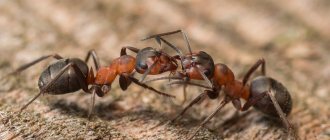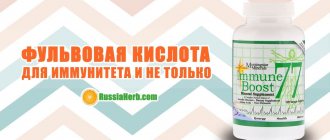At the end of summer and at the very beginning of autumn, the plum ripens. This is a tasty, juicy and aromatic fruit, which in ancient times was considered an exquisite delicacy. Tender jam is made from plums, compotes and sauces for meat are made . These ruddy fruits are enjoyed by adults and children. Plums come in different varieties, they differ in color, ripening period and taste. The pulp of this fruit contains many vitamins and nutrients, but sometimes you can see recipes that use plum pits. The benefits and harms of plum seeds have long been controversial. To understand whether the inside of the seeds can be eaten, you need to examine this fruit in detail.
Plum pit
The edible part of the product is the kernel. It is difficult to pull it out from under the thick layer of shell. The seeds must be subjected to heat treatment, otherwise their use can be harmful to the body. Amygdalin is particularly dangerous . However, its concentration is greatly reduced if the kernels are exposed to high temperatures. Therefore, most often, jams, jams, compotes, liqueurs, sauces and juice are prepared from plum seeds. Plum kernel oil is especially popular. It is used in folk medicine and cooking.
Storage of canned products should not exceed 1 year . The product accumulates harmful substances that can cause poisoning and digestive problems.
Treatment of helminthic infestation
When the body is infected with parasites, it is recommended to use fresh plum seeds - the kernels from canned fruits do not contain elements that destroy helminths. Break the hard shell of the seeds with a hammer (act carefully so as not to injure yourself or damage the nucleoli), you will need 7-8 kernels. For children, reduce the dosage - 3-4 pieces are enough.
Grind the kernels into a paste using a mortar. Mix with bee honey (10-15 g), mix the mass well. Consume at one time. Take the home remedy three times a day. The most effective treatment will be if taken immediately after a meal.
It is not recommended to abuse it - treatment only needs to be carried out for three days. After a week, repeat the course - use homemade medicine for another 2-3 days. Treatment must be completed with a visit to the doctor and undergoing the necessary tests to confirm complete elimination of parasites.
Using a simple home remedy is also recommended for preventive purposes. Eating the tasty mixture 1-2 days a month is enough to protect the body from infection with worms.
Beneficial features
Consumption of products made from plum pits has a positive effect on the functioning of the entire body. When consuming the products, the following changes are observed:
- The functioning of the cardiovascular system improves.
- The body accepts heavy physical activity more easily.
- Internal and external inflammation is reduced.
- Memory and performance improves.
- The fight against colds and sore throats is intensifying.
- Toxins and harmful substances are removed from the body.
- The functioning of the digestive system improves and appetite increases.
- Metabolism accelerates.
- Immunity is strengthened.
- Relieves spasms and pain in muscle tissue.
- The risk of cancer formation is reduced.
- The condition of hair and nails improves.
- Tension is relieved and the body relaxes.
- Accelerates the process of cell regeneration.
- The skin is saturated with moisture and becomes smooth.
- The aging process slows down.
Fruit seed oil is especially useful. It is widely used in cosmetology due to its properties:
- Protects skin from sun rays and ultraviolet radiation.
- Gives strength and a healthy look to weakened hair.
- Improves the condition of eyelashes and accelerates their growth.
- Eliminates flaking and dry skin.
- Cleanses pores and removes impurities.
Plum seeds help in the fight against various diseases. It is recommended to consume products containing nucleoli for the following diseases and pathologies:
- Diseases of the lungs and bronchi, cough, colds, flu.
- Pain in the lower back and joints.
- Gastrointestinal problems.
- Diseases of the stomach, kidneys and bladder.
- Rheumatism, atherosclerosis, gout.
- Lethargy, body fatigue.
- Emotional or physical stress.
Malicious properties
The following can lead to disruption of the body's functioning:
- Incorrect preparation of the product.
- Poor heat treatment.
- Violations of product storage standards.
- Individual intolerance of the body.
- Diseases of the digestive and cardiovascular system.
to consult a doctor before consuming plum seeds .
The main danger to the body is the substance amygdalin. When it enters the stomach, it begins to interact with microflora. The process produces hydrocyanic acid, a dangerous substance that causes the following problems:
- Decreased oxygen in the body.
- Rapid breathing, shortness of breath.
- Disturbance in the functioning of the nervous system.
- Slow heart rate.
- Changes in blood pressure.
- Development of cardiovascular failure (can lead to death).
- Metabolic disease.
How to use
Housewives often find canned products made from plum kernels. The seeds do not require special treatment; under the influence of high temperatures, the concentration of hazardous substances decreases. Plum kernel oil is added to sauces, salads, dressings, bread dough, and fried foods. It gives a pleasant taste and aroma.
The oil is widely used in cosmetology . It is used as a hair mask. Regular use improves hair structure, strengthens hair follicles and promotes growth. The product is added to shampoos and conditioners to add volume and softness to hair.
The oil helps to monitor the condition of your facial skin. It is suitable for any age: in adults it rejuvenates and reduces wrinkles, in young people it mattifies, evens out tone and fights pimples, acne and other problems.
Plum kernel oil is also suitable for caring for the skin of hands and feet, lips, eyelashes.
Plum pits quickly accumulate and retain heat for a long time, so they are used to make a heating pad . It is used to treat colds, pain in muscles and joints, fatigue and lethargy, and colic in young children. The product is heated in the microwave and applied to the sore spot. Can be used multiple times. The product does not cause allergies, it is environmentally friendly and gives a pleasant aroma.
Plum seeds have many beneficial properties. Their products are used in cooking and cosmetology. The products help in the treatment of many diseases and contribute to the proper functioning of the body. However, the substances contained in the seeds can cause serious harm if you do not know how to use the kernels.
pros
The kernels that hide the plum pits are rich in various acids. Extracts from them have a very positive effect on skin and hair if added to care products. When it comes to hair, the benefits are not only for the hair follicle. The oil envelops the entire length of the hair, forming a protective film that prevents split ends and brittleness.
During massage, the oil is completely absorbed into the skin. It softens and moisturizes it. It doesn't leave any unwanted shine, just a light trail of sweet almonds. Anyone who likes to discover new facets of the taste of food will appreciate the pleasant aroma of bitter almonds, which is present in unrefined oil. And the various components included in its composition will make the dishes also healthy.
Is it possible to eat plum pits?
Plum pits are actively used in cooking and folk medicine . They do not use the whole seed, but the grain, which is located under the hard shell.
These nucleoli, when fresh, are harmful to the body, especially in large quantities, since they contain the toxic substance amygdalin. When it enters the human stomach, it is converted into hydrocyanic acid, which can cause severe poisoning. But after heat treatment they can be consumed.
Peculiarities
Amygdalin is a harmful substance that plum pits contain. If it enters the human stomach, the body produces hydrocyanic acid, which can pose a serious health hazard. But if you accidentally eat a plum with a pit or a few kernels, it will not cause harm. When fruits with seeds undergo heat treatment, the amount of harmful substances in them decreases, so they become safe for consumption. Therefore, homemade preparations from plum fruits with pits are harmless. But storage of plum jam and compotes with pits should not exceed twelve months. It should be remembered that during long-term storage, bad substances begin to gradually accumulate in them, which can cause severe poisoning.
Eating plum seed oil does not cause harm to the body. Scientists have not identified any serious contraindications in this regard. The only exception is individual intolerance. Oil can be present in the diet of every person, even pregnant or breastfeeding women.
People who are watching their figure should not forget that oil has a high calorie content, and this is the path to weight gain.
The benefits and harms of plum seeds
- There is an opinion that plum kernels may have the following positive properties:
- expectorant;
- wound healing;
- antimicrobial;
- anti-inflammatory;
- painkiller;
- immunomodulating;
- laxative;
- urinary and choleretic. [/ul
Plum seeds can cause harm only when eaten uncontrolled and consumed fresh. When seamed, they do not pose a danger, since after heat treatment, harmful substances evaporate. Although seaming can also be harmful, but only after it has stood for more than a year. After preparation, they must be consumed within 12 months, so it is important to mark the exact date of sealing on the jar.
- Symptoms of poisoning are:
- coloring the skin bright pink;
- the appearance of a persistent odor of almonds from the mouth;
- increased salivation;
- sore throat;
- disturbances in the gastrointestinal tract;
- impaired coordination of movements;
- dilated pupils;
- convulsions.
Use of plum pits
It is known that plum kernels are a common ingredient in oriental medicine . They are part of remedies that cure bronchitis, cough, high fever, and purulent wounds. They are also used for the prevention of cancer. Most often, an alcohol tincture made from plum grains is used for treatment.
In cooking, the kernels are used in jams - compotes and jam . It is believed that if you put them in a jar, the syrup and jam will be transparent and have an appetizing color. Fruits are also often rolled whole, without removing the seeds.
Oil is also made from plum seeds . It is used for cosmetic purposes to soften and nourish the skin.
Treatment of cancer
For cancer, alternative medicine suggests taking a tincture made from fruit seeds. Treatment at home is recommended only after medical consultation.
Self-medication in the presence of malignant tumors can result in serious complications, rapid spread of the disease to healthy tissue, and even death. Preparation:
- Prepare the seeds - remove the pulp, rinse, do not dry, immediately place in a clean glass container for infusion, the jar should be one third full.
- Add a few ripe whole fruits.
- Fill to the top with vodka or good homemade pervach, close tightly with a plastic lid, and place in the basement (cellar).
- The infusion is considered complete when the skin peels off the ripe fruits and the liquid acquires a pleasant dark shade.
- Strain, fill a clean bottle with liquid, and seal.
Take twice a day, dosage – 10 drops. In case of increased sensitivity of the body, a tendency to allergic reactions, or intolerance to alcohol-containing drugs, dilute with a small amount of cold water. Take after a meal.
The product has several contraindications. It is not recommended to give homemade medicine containing alcohol to children, women expecting a baby, or breastfeeding.
The benefits and harms of plum seeds
At the end of summer and at the very beginning of autumn, the plum ripens. This is a tasty, juicy and aromatic fruit, which in ancient times was considered an exquisite delicacy. Tender jam is made from plums, compotes and sauces for meat are made . These ruddy fruits are enjoyed by adults and children. Plums come in different varieties, they differ in color, ripening period and taste. The pulp of this fruit contains many vitamins and nutrients, but sometimes you can see recipes that use plum pits. The benefits and harms of plum seeds have long been controversial. To understand whether the inside of the seeds can be eaten, you need to examine this fruit in detail.
History of prunes
The history of prunes begins in the 6th century BC, when the Egyptians noticed that some fruits did not spoil in the sun, but simply dried out. And at the same time they retain their taste and valuable qualities. The plum was one of the first fruits to be dried.
In ancient times, prunes were considered a well-known remedy for stress and depression. It was added to many meat and vegetable dishes.
Prunes appeared in Russia only in the 17th century. Most often it was imported from France and the Balkans, where a lot of plums were grown. The French were among the first to learn how to obtain prunes in a very high-quality form.
General characteristics of the plant
The plum is a stone fruit plant, just like the apricot or cherry. Plum trees can often be found in garden plots, cottages and even in the courtyards of high-rise buildings. There are about a hundred varieties of this plant, each of which has its own name and characteristics. The color of the fruit can range from almost white to dark burgundy. The taste is also quite varied. Some plums are sweet and juicy; even small children enjoy eating them. But there are some specimens whose berries have a tart and sour taste. These plums are not for everyone when eaten fresh, but they make an excellent preserve.
The consistency of the pulp also differs; it can be soft and juicy or hard and dry. A distinctive feature of all varieties is the presence of large amounts of glucose, sucrose and fructose in the pulp. The energy value of plums is only 49 calories, so these fruits can be used in dietary nutrition .
People who eat at least five plums a day provide the body with the daily requirement of vitamins C, B and E.
Benefits of plums for human health
All parts of this plant are used for medicinal purposes - flowers, leaves, bark and ripe fruits . Plum pits, or rather the kernels that are found in them, have also found their use. Thanks to its unique composition, plums help normalize many processes in the human body:
- Improve memory - this is explained by the neutralization of deformed cells.
- The permeability of blood vessels improves and their walls are gently cleansed of plaques caused by excess cholesterol in the body.
- Helps normalize blood pressure
- Dry plums have a pronounced antipyretic effect.
- Thanks to the large amount of vitamin C, the immune system is significantly strengthened.
- Excess fluid is gently removed from the body and the water-salt balance is regulated.
- Vision improves, eye vessels and mucous membrane are strengthened.
- The functioning of the digestive organs improves, appetite increases and the level of hydrochloric acid in the stomach decreases.
- Vitamin B improves the functioning of the nervous system. Sleep becomes sound and calm, resistance to stress appears.
- Helps increase hemoglobin.
- Plum decoction has a good bactericidal effect and promotes rapid wound healing.
Negative effects of hydrocyanic acid on the body
Tissue respiration is inhibited, which is caused in the body by hydrocyanic acid formed in apricot kernels. This process occurs in all tissues and leads to energy deficiency, which adversely affects, first of all, the activity of the central nervous system, and especially the brain.
The nervous system is more sensitive to lack of “nutrition”, as a result of which the structure of nerve cells irreversibly changes. The development of starvation of nerve cells has been observed with normal oxygen levels in the blood, which is an important component of tissue respiration and plays a major role in the supply of energy molecules. The toxin prevents the inclusion of oxygen in the reaction of their formation, which leads to its accumulation in the blood. This mechanism is associated with the special appearance of those who died from poisoning: the scarlet color of the skin and mucous membranes remains, which indicates the absence of oxygen starvation.
The action of the poison leads to stimulation of the release of blood cells from the spleen, which is a consequence of energy starvation of the brain. According to research results, this reaction occurs due to a direct reflex effect on the spleen. In other words, the body thinks that energy deficiency is caused by a lack of oxygen and, by stimulating the release of oxygen carriers, tries to solve the problem and restore homeostasis.
At the same time, other vital organs are still able to perform their functions. Those who died from hydrocyanic acid formed in the seeds of fruits, for example, plums, have fewer changes in the heart, liver, and kidneys, in contrast to the central nervous system. With prolonged action of the poison in the heart, oxygen deficiency also appears over time due to inhibition of enzyme systems. Similar changes occur in other organs.
Tissues lose their ability to consume oxygen. The accumulation of the latter in the blood leads to a decrease in the arteriovenous difference, and then to its disappearance. In this case, venous blood during severe poisoning will look like arterial blood.
Hydrocyanic acid is a weak acid and, at the same time, is a reactogenic substance. There are quite a lot of compounds in the body with which it can react. But since the interaction process is slow, and pathological changes due to intoxication develop faster, the toxic substance does not have time to react. The poison actively affects the content of hydrogen ions and leads to a shift in the pH of the environment to the acidic side, resulting in the development of non-respiratory (metabolic) acidosis.
Now it is clear why hydrocyanic acid is so dangerous and what pathological processes occur during poisoning.
What conclusions can be drawn? You should not eat the kernels of fruits from the Rosaceae family. Jam, compotes, and wine must be prepared from seedless fruits. Or don’t skimp on sugar on them. The exception is wine: except for grapes, all other berries must be taken without seeds. Following simple rules will help keep you and your family healthy.
- Food poisoning during pregnancy - how to identify and what to do
- How to distinguish toxicosis from poisoning
- How long does food poisoning last?
- Which doctor should you contact if you are poisoned?
Modern research has established that the seeds of bitter almonds, pits of peaches, apricots, cherries, plums and other plants contain vitamin B17 or amygdalin, or laetrile - a substance that quickly destroys cancer cells that have already formed, and which, as a preventive measure, prevents the appearance of human body cancer cells. The book “A World Without Cancer” by documentary writer Edward Griffin from America is dedicated to this discovery. In it, the author provides scientific arguments about how simple it is to prevent cancer, and expresses bewilderment: why orthodox medicine rejects a medicine that is successfully used by many clinics. The author finds the answer to this question not in science, but in politics around the oncology industry. Millions of dollars are spent on cancer research, and pharmaceutical companies make millions in profits from the sales of synthetic drugs. More people live near cancer than get sick from it. And here you have a simple vitamin, and the whole industry collapses. Meanwhile, 35 years ago it was stated that apricot seed is a cure for all known cancers. The cancer-killing substance has been found in the seeds of most fruits, particularly apricots. At the same time, scientists stated that if these seeds are included in a person’s daily diet, then cancer cells will never develop in him. Dr. Ernst T. Krebs, a biochemist from San Francisco, put forward the theory that cancer is not caused by some mysterious viruses, toxins or bacteria, but is a disease of vitamin deficiency, like scurvy or pellagra, which is caused by a lack of food in the diet of modern man some essential components. He identified this component, vitamin B17. It is a member of the nitrilocide family and is found naturally in abundance in over 1,000 edible plants. This component is found in particularly significant quantities in the fruit seeds already mentioned above - apricot, peach, bitter almond, cherry, blackthorn and plum. It is also found in cereals (in the stem and leaves, so, unfortunately, it is not in wheat bread), millet, sorghum, corn, flax seeds, grapes, apples, blueberries, blueberries, cranberries and many other foods that modern civilization have been excluded from the human diet. One of the arguments of opponents of vitamin B17 is that this vitamin supposedly contains “deadly” cyanide - a salt of hydrocyanic acid (that’s where they come from - children's horror stories about plum pits). Dr. Krebs proved that B17 is completely harmless to humans. Cyanide is indeed an integral part of the B17 molecule, but in a bound form. I will not go deeply into the mechanism of all this chemistry, but the doctor proved that cyanide is released only in cancer cells, which destroys them. In healthy areas of the body, the cyanide in the molecule remains bound and does no harm. In the article I’m talking about here, a lot more has been written, both arguments and facts are given. Those who want to know more details will find all this on the Internet. I made it clear to myself: I will eat all the apples, right down to the cuttings. Same with grapes and pears. I will buy dried fruits, compotes and jams only with seeds. In my kitchen I’ll have a nice nickel-plated hammer for cracking nuts (exactly the hammer like in childhood, and not this one... what’s it called? Well, cracking nuts, using pliers...). I will eat less sugar, it feeds cancer cells. In general, I planned to live a long time. I wish the same for you.
Use of plum pits
Plum kernels cannot be considered a delicacy, since it is very difficult to break the skin of the seed to get to the nut. In oriental medicine, the use of plum seeds is quite widespread. Healing tinctures are prepared based on the seeds , which help with the following diseases:
- for ordinary and obstructive bronchitis;
- with a prolonged cough of unknown etiology;
- to prevent cancer.
In ancient China, tincture of cherry and plum seeds was used to treat many ailments. It was used to wash purulent wounds and treat high fever and infectious diseases .
The poison in cherry pits and plum pits helps inhibit the growth of tumors. They should be used with great caution and only after consulting a doctor.
Removing kidney stones
Plum pits are a powerful weapon offered by alternative medicine against kidney stones. The active components that saturate the decoction crush the formations and promote their removal from the tissues. Using a home remedy will also protect against relapses, has a beneficial effect on the genitourinary system, and normalizes the functioning of internal organs.
Step-by-step folk recipe:
- Remove the kernels from the seeds, place them in an even thin layer on baking sheets, and dry.
- Grind the dry seeds into small pieces and place them in a cooking container (you will need 10-15 grams of product).
- Bring water (200 ml) to a boil and steam the plant mass.
- Place on the stove and boil for a quarter of an hour.
- After cooling and straining, bring to the original volume with boiled water.
Drink the prepared decoction three times, after each meal. The duration of treatment is individual, usually depending on the size of the formations and general health. It is recommended to regularly visit a doctor, who should monitor the effectiveness of alternative treatment. If necessary, with the permission of a specialist, use the decoction as an adjuvant (with prescribed drug therapy).
Damage to plum seeds
Few people do not know that you cannot eat plum pits, as they are poisonous . Plum nucleoli contain large amounts of amygdalin. This substance, entering the stomach cavity, is converted into hydrocyanic acid under the influence of hydrochloric acid. Such acid in large quantities causes poisoning, which is manifested by the following symptoms:
- the skin becomes bright pink;
- the smell of almonds emanates from the victim’s mouth;
- saliva flows profusely, there is a sore throat;
- the digestive system suffers - gagging and frequent urge to defecate appear;
- breathing is impaired;
- Coordination of movements is impaired, speech confusion is observed, and the pupils dilate significantly.
If a person has eaten a lot of plum seeds, then there may be convulsions, which are accompanied by involuntary passage of urine and feces . After this, the person falls into a comatose state. If medical assistance is not provided on time, then everything ends in the death of the victim.
Potato. Green potatoes
Fun fact: In the US, tomatoes are considered a vegetable, while in the rest of the world they are considered a fruit, or more accurately, a berry. The reason for this was a tax on vegetables, but not fruit.
Tomato leaves and stems contain a substance called “glycoalkaloid” that can cause extreme nervousness, headaches and stomach upset. Green tomatoes also contain some amount of this substance, but usually not much.
Potatoes are one of the most common vegetables around the world. Like tomatoes, potatoes contain glycoalkaloids in their stems and leaves. The tubers themselves are safe to eat unless they have turned green or sprouted.
Green potatoes contain solanine, which is produced when exposed to ultraviolet light.
When consuming large amounts of solanine, signs of poisoning may appear: nausea, vomiting, diarrhea, abdominal pain, and in severe cases lead to coma and even death. This is why potatoes need to be stored in a cool, dark place.
Are seeds in compotes and jam dangerous?
Some housewives close the compotes along with the seeds. In this case, the preservation turns out to be a beautiful color and absolutely transparent. It is not recommended to store such jars for more than a year, since over a longer period of time, hydrocyanic acid passes directly into the liquid and can cause severe poisoning.
Jam is usually cooked in several batches, so with prolonged heat treatment, harmful substances are destroyed and become harmless to humans. In order not to risk the health of yourself and your family, it is better to spend a little time and remove the seeds from the fruit before canning. It’s better if the compote is not so transparent, but it will remain healthy.
You can’t ignore prunes, which are prepared from fleshy and sweet varieties of plums. It is believed that the healthiest prunes are those that have a pit . It is advisable to choose just such a product, and before preparing dishes and baking, carefully remove the pits from the prunes.
If there is a lot of plum production at your dacha, you can freeze or dry the fruit. In this case, the healing properties of the product are not lost, but the risk of poisoning with hydrocyanic acid is minimized.
cherry blossom
Cherry blossoms are invariably associated with rebirth, purity, beauty and love. Its white or pale pink flowers, collected in inflorescences and densely dotting the tree during the flowering period, really look very tender and touching. Cherry trees are planted in almost every garden and near every house. The healing properties of the flowers have been little studied; it is only known that distilling cherry flowers with steam produces cherry water, which is used in the treatment of inflammatory eye diseases.
The structure of a cherry flower.
The flower is located on a short stalk - a peduncle. It expands upward and forms a receptacle, to which is attached a calyx consisting of 5 green sepals, as well as a corolla of 5 pale pink petals. Inside the flower there are stamens and pistil. The lower, expanding part of the pistil is called the ovary. On the upper part of the ovary there is a rounded thickening - the stigma. One ovule develops in the ovary of a flower, so only single-seeded fruits ripen in cherries.
